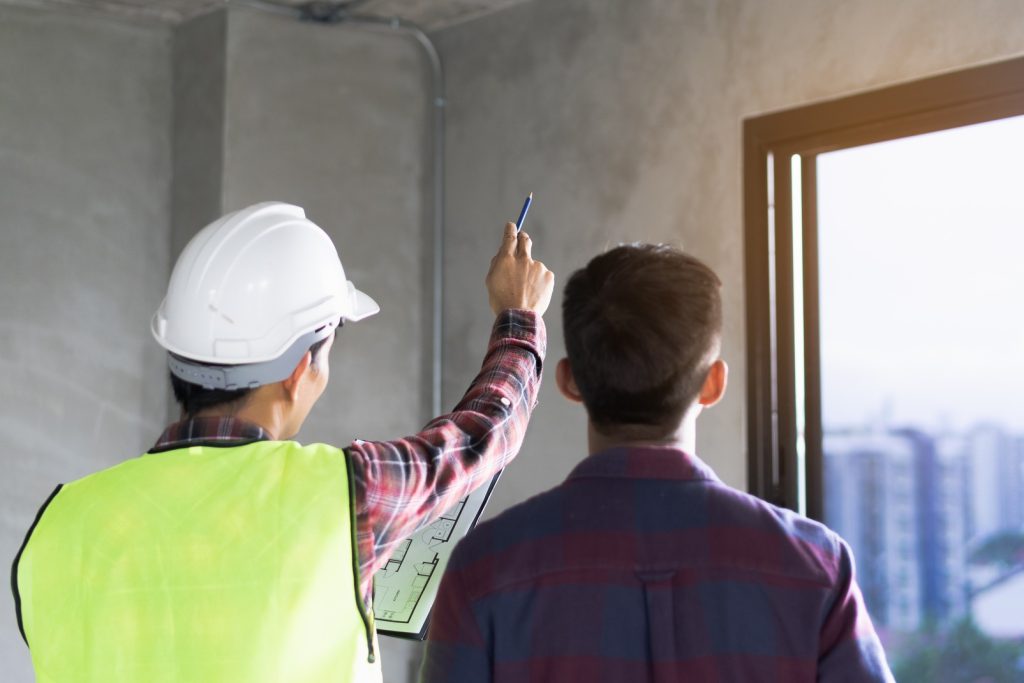A home safety inspection is a key process to make sure your living space is safe, secure, and free from hazards. Whether it’s a routine check or one prompted by specific concerns, preparing your home properly can make the process smoother and more effective. This guide will help you get ready for a safety inspection, covering the essential steps to ensure everything goes well.
Understanding the Purpose of a Safety Inspection
Before you start preparing, it’s important to understand what a safety inspection aims to do. These inspections are designed to find and fix safety issues in your home. They check various things, including electrical systems, fire safety, the condition of the structure, and general safety features. The main goal is to prevent accidents, reduce risks, and make sure your home meets safety standards.
1. Start with a Clean and Organized Home
Declutter
The first step in preparing for a safety inspection is to declutter your home. This makes it easier for the inspector to move around and see everything clearly. Remove unnecessary items from floors, stairways, and walkways. Clutter can hide potential hazards and make it harder for the inspector to do a thorough job.
Clean Key Areas
Make sure the areas that will be inspected are clean. For instance, ensure that vents and registers are free of dust, and that electrical panels are easy to access. A clean home allows the inspector to spot potential issues more easily and gives a better overall impression.
2. Review and Fix Common Safety Issues
Check Smoke and Carbon Monoxide Detectors
Make sure smoke detectors and carbon monoxide detectors are installed and working. Test each one to ensure it makes a sound when you press the test button. Replace batteries if needed and ensure detectors are in important areas like hallways, bedrooms, and near the kitchen.
Inspect Fire Extinguishers
Check that fire extinguishers are easy to reach and not expired. They should be placed in key locations such as the kitchen, garage, and near any heating appliances. Make sure they are fully charged and ready to use.
Examine Electrical Systems
Look at electrical outlets, switches, and cords for any signs of damage. Replace any frayed cords and ensure all outlets have covers. Check that electrical panels are accessible and properly labeled.
3. Address Structural and Safety Concerns
Inspect the Roof and Gutters
Check the roof for any signs of damage, like missing shingles or leaks. Clean out gutters and downspouts to make sure they drain properly. A well-maintained roof and gutter system helps prevent water damage and structural problems.
Check for Water Damage
Look for signs of water damage in ceilings, walls, and floors. Water stains, peeling paint, or mold growth can indicate leaks or moisture problems. Fix any issues before the inspection to prevent further damage.
Ensure Proper Lighting
Make sure all areas of your home, including stairways, hallways, and outdoor spaces, are well-lit. Replace any burnt-out bulbs and check that light fixtures are working properly. Good lighting helps prevent accidents and improves safety.
4. Verify Safety Features and Accessibility
Secure Handrails and Staircases
Check that handrails on staircases are secure and in good shape. Make sure all stairs have proper treads and are free of hazards. Well-maintained handrails and staircases are important for preventing falls and accidents.
Test Locks and Deadbolts
Ensure that all doors and windows have working locks and deadbolts. Test each lock to make sure it operates smoothly and provides good security. Secure windows and doors help keep your home safe.
Ensure Proper Ventilation
Check that ventilation systems, including exhaust fans and vents, are working properly. Good ventilation prevents moisture buildup and ensures good indoor air quality. Clean vents and fans to keep them working efficiently.
5. Prepare Documentation and Access
Gather Relevant Documents
Collect any paperwork related to recent repairs, upgrades, or maintenance. This might include receipts, warranties, and service records. Having this information handy can help the inspector understand recent changes and answer any questions that come up.
Provide Access to Key Areas
Make sure the inspector can easily access all important areas of your home. This includes attics, basements, crawl spaces, and utility rooms. Move any items blocking access and unlock any doors or gates that might restrict entry.
6. Communicate with the Inspector
Discuss Any Concerns
If you have specific concerns about your home or areas you want the inspector to focus on, let them know in advance. This helps the inspector pay special attention to your concerns and provide more detailed feedback.
Ask Questions
Don’t hesitate to ask the inspector about the process, what to expect, and any specific safety recommendations. A good inspector will be happy to answer your questions and provide helpful information.
5. Prepare Documentation and Access
Gather Relevant Documents
Collect any paperwork related to recent repairs, upgrades, or maintenance. This might include receipts, warranties, and service records. Having this information handy can help the inspector understand recent changes and answer any questions that come up.
Provide Access to Key Areas
Make sure the inspector can easily access all important areas of your home. This includes attics, basements, crawl spaces, and utility rooms. Move any items blocking access and unlock any doors or gates that might restrict entry.
6. Communicate with the Inspector
Discuss Any Concerns
If you have specific concerns about your home or areas you want the inspector to focus on, let them know in advance. This helps the inspector pay special attention to your concerns and provide more detailed feedback.
Ask Questions
Don’t hesitate to ask the inspector about the process, what to expect, and any specific safety recommendations. A good inspector will be happy to answer your questions and provide helpful information.
7. Make Necessary Repairs
Address Issues Promptly
If you find any issues during your initial review, fix them before the official inspection. Making repairs not only improves safety but also shows that you are serious about home maintenance.
Hire Professionals if Needed
For complex issues like electrical problems or significant structural concerns, consider hiring a professional to make repairs. This ensures that the work is done properly and meets safety standards.
8. Final Walk-Through
Conduct a Final Check
Before the inspector arrives, do a final check of your home to make sure everything is in order. Double-check that all safety features are working, areas are accessible, and documentation is gathered.
Prepare for the Inspector’s Arrival
Be ready to either be present or have someone who can answer questions when the inspector arrives. Ensure you can provide access to all areas and answer any questions the inspector might have about your home.
Conclusion
Preparing your home for a safety inspection involves cleaning, fixing common issues, and ensuring that all safety features are in place and working. By following these steps, you can make the inspection process smoother, spot potential problems early, and make sure your home meets safety standards. Proper preparation not only helps you pass the inspection but also improves the overall safety and comfort of your home.
contact us
Get in touch
Please find our company information below, alternatively, you can complete the web form on this page and we will reach out to you as quickly as possible.
Address
California, USA
Opening hours
Mon - Fri: 8.00 - 17.00
Sat-Sun: Closed

Address
Columbia, SC
About us
At Todd Peters Electric Services, we understand electricity’s critical role in your everyday life. Our team of highly skilled and certified electricians is dedicated to delivering safe, reliable, and efficient solutions.
